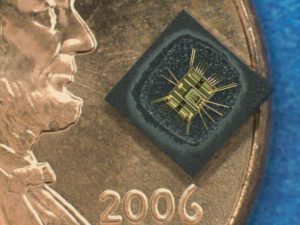Duplicate MCU PIC16C57 Memory Program
Some instructions operate internally as read followed by write operations which is critical for Duplicate MCU PIC16C57 Memory Program. The BCF and BSF instructions, for example, read the entire port into the CPU, execute the bit operation and re-write the result. Caution must be used when these instructions are applied to a port where one or more pins are used as input/outputs in order to Crack Philip Microcomputer P87C54 Eeprom Memory.
For example, a BSF operation on bit5 of PORTB will cause all eight bits of PORTB to be read into the CPU, bit5 to be set and the PORTB value to be written to the output latches. If another bit of PORTB is used as a bi-directional I/O pin (say bit0) and it is defined as an input at this time, the input signal present on the pin itself would be read into the CPU after Read Chip HOLTEK HT45R06 and rewritten to the data latch of this particular pin, overwriting the previous content.
As long as the pin stays in the input mode, no problem occurs. However, if bit0 is switched into output mode later on, the content of the data latch may now be unknown. Example 5-1 shows the effect of two sequential read-modify-write instructions through the process of Clone Philip Chip LPC87LPC761 Heximal Code (e.g., BCF, BSF, etc.) on an I/ O port.
A pin actively outputting a high or a low should not be driven from external devices at the same time in order to change the level on this pin by Break IC software (“wired-or”, “wired- and”). The resulting high output currents may damage the chip.
The actual write to an I/O port happens at the end of an instruction cycle, whereas for reading, the data must be valid at the beginning of the instruction cycle to support the process of Break DSP Controller TMS320F2806PZA Memory. Therefore, care must be exercised if a write followed by a read operation is carried out on the same I/O port.


